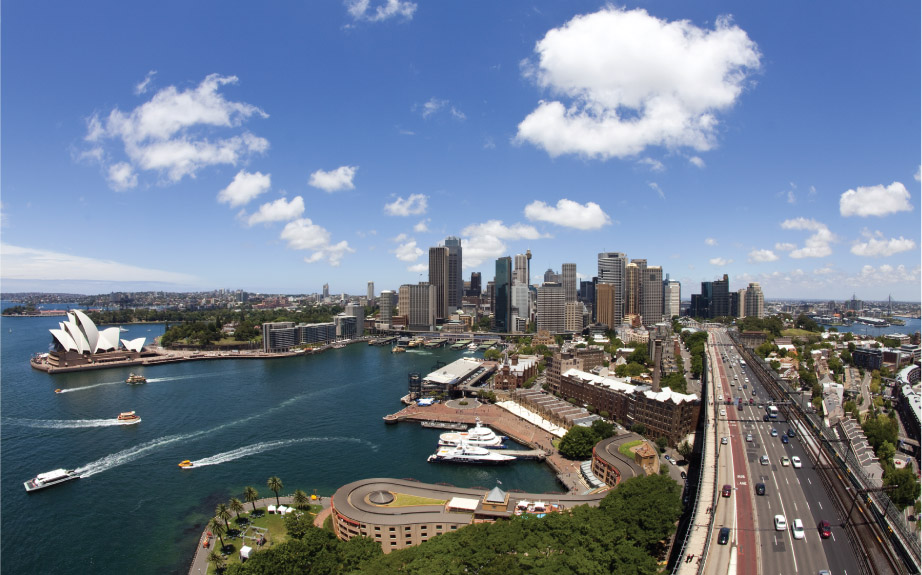9.3 The ‘pull’ of the cities
Where people live in Australia is largely linked to settlement history. The major cities along the east coast provide sea links for trade and the movement of people. Sydney, Melbourne and Brisbane alone account for more than 40% of Australia’s total population; if we add two other state capitals – Adelaide and Perth – it totals more than 50%. With the addition of all other significant urban areas, the population resident in cities is estimated to be around 90% of Australia’s total population. Source 9.6 shows the percentage change in rural and urban growth since 1950, with projections to 2025.

| Indicator | 1950 | 1970 | 1990 | 2010 | 2025 |
|---|---|---|---|---|---|
| Rural population | 1 881 000 | 1 876 000 | 2 496 000 | 2 439 000 | 2 428 000 |
| Urban population | 6 297 000 | 10 853 000 | 15 601 000 | 19 829 000 | 22 813 000 |
| % urban | 77 | 85.3 | 85.4 | 89.0 | 90.4 |
| Rural annual growth rate (over 5 years) | 0.22% | 0.84 | −0.40 | −0.50 | −0.04 |
| Urban annual growth rate (over 5 years) | 2.98% | 1.90 | 1.49 | 1.49 | 1.14 |
| Major cities | |||||
| Adelaide | 4 29 000 | 7 92 000 | 1 046 000 | 1 181 000 | 1 535 000 |
| Brisbane | 4 42 000 | 7 98 000 | 1 329 000 | 1 993 000 | 2 627 000 |
| Melbourne | 1 332 000 | 2 334 000 | 3 117 000 | 3 896 000 | 4 962 000 |
| Perth | 311 000 | 611 000 | 1 160 000 | 1 955 000 | 2 121 000 |
| Sydney | 1 690 000 | 2 667 000 | 3 632 000 | 5 254 000 | 5 646 000 |
The figures indicate the gradual decline in rural population and the increasing percentage of people living in the major capital cities. Factors that help explain these outcomes include declining rural employment and consolidation of small farms into large ones; redistribution of infrastructure including services and employment; migration from rural areas to cities; and expansion of the major cities by the addition of job-seekers and new arrivals.

One of the consequences of this trend is urban sprawl. Accommodating the new arrivals is difficult, and affects both rental and home ownership costs and options. Many new settlers – and others – have to move to the city fringe, where housing is more affordable. This requires personal mobility to get to work and access services – often through car ownership – because of poor public transport locally.
There are positive effects of increased population on urban areas: more people helps create growth economically, including housing, schools and services. There can be negative consequences if there are problems in constructing those services for expanding suburbs; also, communities can suffer through having limited access to support services and to parks and green spaces.
In 2001, eight out of 10 people born overseas lived in a capital city and just over half were in Sydney or Melbourne.